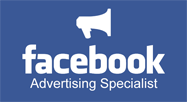In the online marketing industry, we hear a lot of questions from clients about image resolution and its importance for web design, social media marketing and other online interaction. In this post, we’ll help you understand what image resolution is and how you can use it to your advantage when selecting photographs and other images to represent your brand.
Digital photographs are made up of millions of pixels, or tiny squares. These pixels essentially form a mosaic that, when taken together as a whole, lets us view an image. Image resolution is measured in a standard known as pixels per inch (PPI) or dots per inch (DPI). When a picture is taken and digitally saved, it will have a fixed number of pixels.
Images with a greater number of pixels per inch have what’s called a higher resolution than images with fewer pixels per inch. When you view an image online that comes across fuzzy or grainy, it’s a low-resolution image that doesn’t have very many pixels per inch. Images that come across with clarity have higher resolution, or more pixels per inch.
To make sure your images show up crisp and clear, you should always choose high resolution images, right? Not necessarily. High resolution images are great when you need to show high level of detail in the image or if you’re planning to use the image in a poster-size printout. However, high resolution images contain a lot of information. They can be a problem on the internet because they can cause images or pages on your website to load slowly. Print applications like menus or brochures need a higher resolution than web uses do.
In the age of the internet and tons of competition for web traffic, it is imperative that your images and web pages load pretty much instantaneously. This tip is especially important if you’re in the business of selling products. Unless you’re a photographer and the quality of photos is an essential part of promoting your business, you don’t need to use high resolution photos.
When choosing images for your website, choose the image sizes carefully. If you have a gallery of product images, use small photos that are fairly low resolution. When the user clicks on the product image, you should make sure a larger image appears on the next page. Further, if you have a zoom feature, you’ll want to make sure the image is of high enough resolution so that the viewer can see details when zoomed in.
Choosing the right images for your website and social media can feel daunting. Let the experts at Limelight help you out! We take pride in helping businesses optimize their images to draw in new customers. We’ll walk you through the process of choosing the appropriate resolution images and give you the feedback you need to get started.



